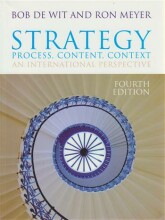A dominant paradigm - Statements and their concepts - Types of statements
4 important questions on A dominant paradigm - Statements and their concepts - Types of statements
Statement is true on the basis of its logical form, and is also called....
Example: a triangle has three sides
These statements say nothing about empirical reality. These are
Synthetic statements should be verifiable or empirical.
- Higher grades + faster learning
- Never study anything twice
- 100% sure, 100% understanding
The inductive-statistical (I-S) model
pronouncements) conclude with a general statement (universal pronouncement).
The logical structure of an I-S declaration is the same as that of a D-N declaration, except that it is not
a deterministic legality but a probabilistic {%).
The question on the page originate from the summary of the following study material:
- A unique study and practice tool
- Never study anything twice again
- Get the grades you hope for
- 100% sure, 100% understanding
































